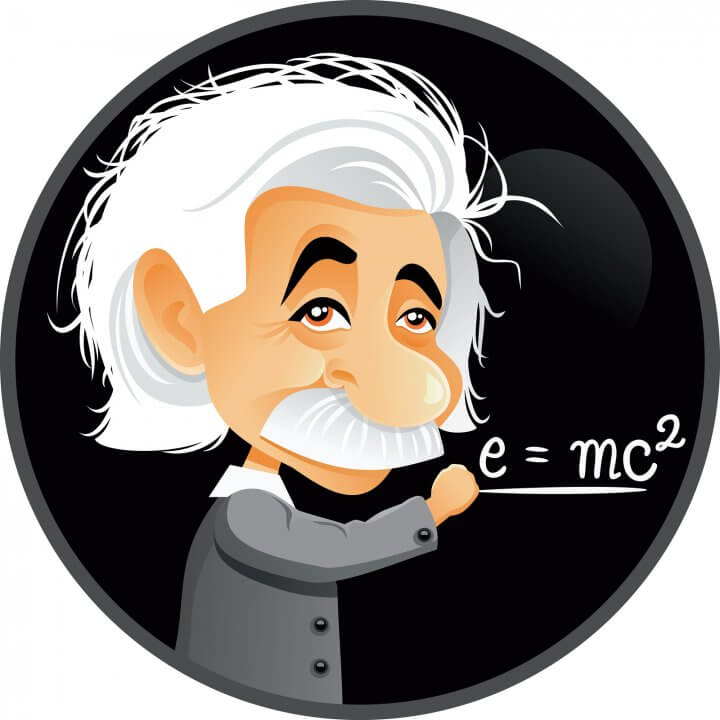Albert Einstein was perhaps the premier scientist of the last 100 years. His insightful and groundbreaking work opened vistas in the scientific community that were virtually impossible to consider before he came along. His work, while at first unrecognized, became the hallmark and standard in the areas of physics and mathematics. In addition, his work in politics and philosophy changed the social landscape as we know it.
Einstein always appeared to have a clear view of the problems of physics and the determination to solve them. His drive to succeed defined him as he strove to achieve his goals. He had a strategy of his own making and was able to visualize the main steps on the way to his goals. He regarded his major achievements as only stepping-stones for the next advance. His goals and his achievements continue to affect us even today. Here are just a few:
• Brownian Motion- In 1827, the botanist Robert Brown observed, under the microscope, the movement or motion of plant spores floating in water and moving about randomly all the time. The explanation for this was thought to be the random motion of molecules “hitting” the spores. The first correct theoretical treatment of the Brownian motion was made by Albert Einstein in 1905. Einstein’s theory then enabled significant statistical predictions about the motion of particles that are randomly distributed in a fluid. These predictions were later confirmed by experiment and became the basis for many medical procedures and testing that we have today.
• The Photoelectric Effect-It was thought that when light was shone on certain substances, the substances gave out electrons, but that only the number of electrons emitted, and not their energy, were increased when the strength of the light was increased. Einstein proposed that under certain circumstances light can be considered as consisting of particles, but he also hypothesized that the energy carried by any light particle, which is called a photon, is proportional to the frequency of the radiation of the light. His proposal that the energy contained within a light beam is transferred in individual units, or quanta, contradicted a hundred-year-old tradition. Virtually no one in any scientific field accepted Einstein’s proposal until a decade later when the American physicist Robert Andrews Millikan experimentally confirmed the theory. This proposal helped out with the development of the quantum theory (mechanics) which even affects the space program today.
• Special Theory of Relativity-This is the theory that provides a consistent explanation for the way radiation (light, for example) and matter interact when viewed from different frames of reference, for example the differences between an interaction viewed simultaneously by an observer at rest and an observer moving at uniform speed. The basis of Einstein’s theory is that the speed of light in a vacuum is a universal constant for all observers regardless of the motion of the observer or of the source of the light. This led to Einstein’s most famous equation E=mc². While this has had almost a universal effect on mathematics, quantum physics and even medical studies perhaps the most famous effect has been on the making of the atomic bomb. Though Einstein did not invent the atomic bomb, this equation laid the theoretical background for it. In 1939 Einstein had collaborated with several other physicists in writing a letter to President Franklin D. Roosevelt, which pointed out the possibility of making an atomic bomb and the likelihood that the German government was embarking on such a course. The letter, which bore only Einstein’s signature, helped lend urgency to efforts in the U.S. to build the atomic bomb.
• Why Is The Sky Blue?-This question was finally settled by Einstein in 1911, who calculated the detailed formula for the scattering of light from molecules; and this was found to be in agreement with later experimentation.


I love Albert Einstein!!!!! 🙂
Cool, Me too! All the way!